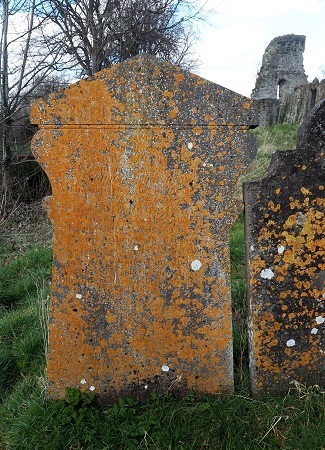|
Burial grounds are places of great interest, a connection between the past and present. By doing some research we can connect names on memorials to important or interesting historical events. As such they are often interesting places to visit. It was on one visit to old St Finianís graveyard that a memorial jumped out at me, the skillfully carved inscription bore the words Ďquarter masterí, this grave obviously belonging to a soldier. With further careful reading of the inscription it was clear that the grave belonged to William Perkin, who died in 1852, a time when Ireland was just coming out of the Great Famine. Also interred in the same grave are two grandchildren and his wife. With some follow up research it was possibly to uncover Williamís interesting military career which brought him across the globe during the turbulent Napoleonic Wars, this is his story.
William was born in Congleton, Cheshire on 16 March 1788. The son of William and Sarah Perkin. He was baptised in the parish of St Peter on 11 April. Congleton was a small town where textile production was an important local industry.
William joined the Royal Artillery in 1804, aged 16 years, and given the rank of Driver. The rank was equivalent to that of a private in the infantry. At the time artillery pieces were drawn by horses and the Driverís job was to help steer the teams of horses which pulled the guns. During his career William moved his way up the ranks to Corporal, then Sergeant, then Quartermaster Sergeant and finally promoted to Quartermaster, which was a commissioned rank.
At a time when people might not have travelled much further than outside their own villages, William certainly travelled more than most, likely part due to the ongoing Napoleonic Wars (1803-1815). Williamís first posting was to Italy in 1805 and later part of the occupying force in Sicily in 1806 and 1807. This followed with participation in the Battle of Maida (4 July 1806). During the
Peninsular War William fought in the Battles of Vittoria (21 June 1813), San Sebastian (7 July-8 September 1813), Nivelle (10 November 1813) and Nive (9-13 December 1813). During the campaign artillery would have been used to great effect against infantry on open ground and during sieges.
Before moving to his next theatre of war William married Rosanna Osmin in Kingston, Surrey on 23 August 1814, Rosanna was a native of Hampshire.
Having fought through Europe Perkin was sent to the Americas to take part in the War of 1812 (1812-1815), which is a lesser known theatre of the Napoleonic Wars. The war saw Britain and her allies fight against the United States and her allies. Perkin was present during the attack on New Orleans (8-18 January 1815), which was defended by later president Andrew Jackson. Later William took part in the siege and capture of Fort Bowyer (7-12 February 1815). This minor war ended in a stalemate and the signing of the Treaty of Ghent, a peace treaty. William later returned to Europe to be part of the occupation force in Paris under the Duke of Wellington in July 1815.
Quartermaster Perkin was promoted to Quartermaster of the 1st Battalion of the Royal Artillery on 1 October 1841. At the time his commanding officer wrote of him (appearing in the Evening Times on 20 October 1841):
ĎArtillery office, Dublin Oct. 13, 1841
The Colonel commanding cannot allow Quartermaster Perkin to quit this command on his promotion to Quarter-master of the 1st battalion of Royal Artillery without ex-pressing the high sense of entertains of his valuable services in the field (in the Peninsular) under his immediate command, as well as during a period of nine years as Quartermaster-Sergeant to that part of the regiment quartered in Ireland; and the Colonel feeling assured that Quartermaster Perkin carries with him the respect of all offices under whose orders he has acted wished him every prosperity, and hope his exemplary character as a soldier (which has obtained or him the honour he now holds) for a long period of 37 years (34 of which as a non-commissioned officer), will have the effect of stimulating others to follow his meritorious example.
It is requested that this order may be inserted in the Order-books, and read to each troop company of detachments in this command.
By order
EDWARD TREVOR, Captain R.A.
Acting Assistant-Adjutant-Generalí
Quartermaster Perkin finally retired from the army on 31 March 1852 with a well-deserved pension, having served over 48 years. He later died on 5 June at Airmount, Kilmainham, and was buried in Lucan. He was likely buried here as his son in lawís family were buried here.

The inscription on his headstone reads:
SACRED
to the memory of
WILLIAM PERKIN Esqr
late quarter master of the 1st
Battalion Royal Artillery
who departed this life June 5th 1852
Also FREDERICK OSMAN YOUNG
Grand son to the above
who died May 12th 1848 Aged 2 years
and Arthur Wellesley Young
who died Nov.r 24.th 1855 aged 5 Months
Grandson of the above
Also Rosanna relict of the above
William Perkin who died Novr:10th 1860
Thank you to Stephen Callaghan for sharing this very interesting article with us.
|